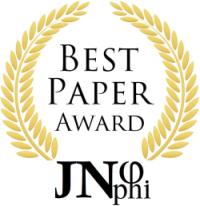Metaphysical Tunneling: Probabilities of Transient Escape from the Hard Problem
Abstract
The Hard Problem is reframed as a tetrad of mutually inconsistent metaphysical propositions. Incompatibilities among the four propositions are dispatched not through the metaphysician’s customary and futile negation of some particular statement or statements within the tetrad but by introducing flexible quantum-formal links to replace more rigid classical logic connecting the four affirmed assertions. This abstract maneuver, logically reframing the Hard Problem, is made more concrete, pictorially accessible, and empirically testable through a description of subjectivity trapped in a sombrero-shaped potential landscape’s circumferential “gutter.” The metaphysical landscape’s shape, constrained by classical logic, breaks a symmetry hidden by current ignorance of the “Theory of Everything” or TOE, long sought by physicists. The circumferential gutter’s status as a collection of metaphysical vacua, each a discrete individual sensorium, obscures subjectivity’s relationship to the TOE’s physicality. It is argued that changing the tetrad’s formal scaffolding from classical to quantum logic allows brief reversible quantum-tunneled ascents by subjectivity from the circumferential gutter of vacua toward full TOE-like symmetry at the central peak of the sombrero-shaped potential. Probabilistically ambiguous attainment of the unknown TOE’s presumably unbroken symmetry through tunneling renders subjectivity’s relationship to physicality equivocal with regard to the causal closure of physics wrought by immunization of physical laws against intrusions by shifting qualia. Casimir-like effects and the Fourier duality of qualia are suggested as research targets for this experimentally falsifiable set of hypotheses.
Keywords:
broken symmetry, causal closure, Hard Problem, inconsistent tetrad, sombrero potential, tunnelingDownloads
Metrics
References
Abbott E. Flatland: A Romance in Many Dimensions. New York: Dover; 1992.
Albert D. Quantum Mechanics and Experience. Cambridge: Harvard University Press; 1992.
Audi R, ed. The Cambridge Dictionary of Philosophy. Cambridge: Cambridge University Press; 1995.
Baggott J. The Quantum Story: A History in 40 Moments. Oxford: Oxford University Press; 2011.
Barrett W. Irrational Man: A Study in Existential Philosophy. New York: Anchor Books; 1958.
Downloads
Published
How to Cite
Issue
Section
Categories
License
Copyright (c) 2025 Donald Mender

This work is licensed under a Creative Commons Attribution-NonCommercial-ShareAlike 4.0 International License.
Authors continue to hold copyright with no restrictions.














